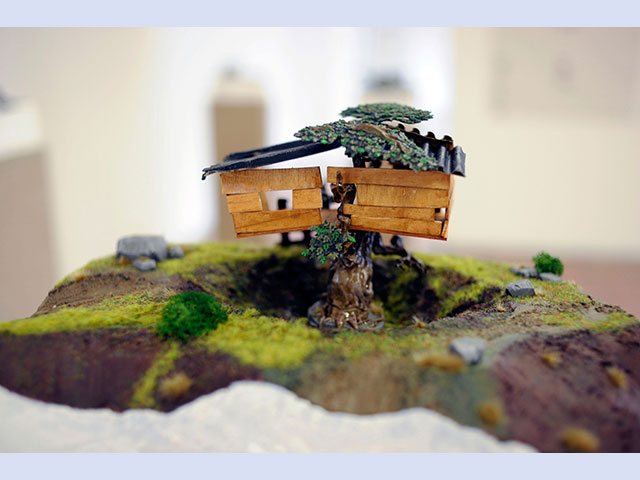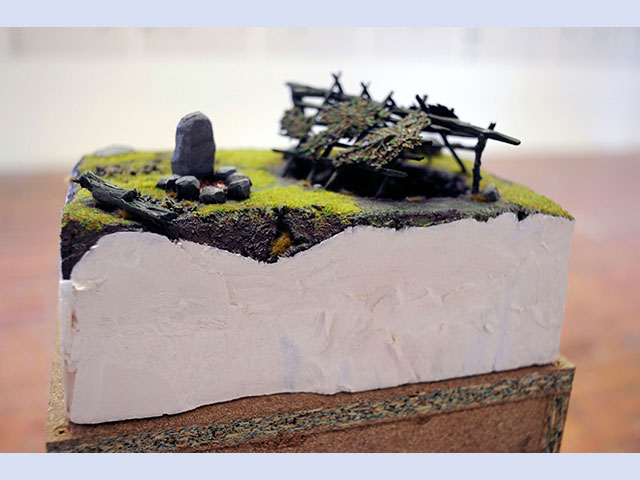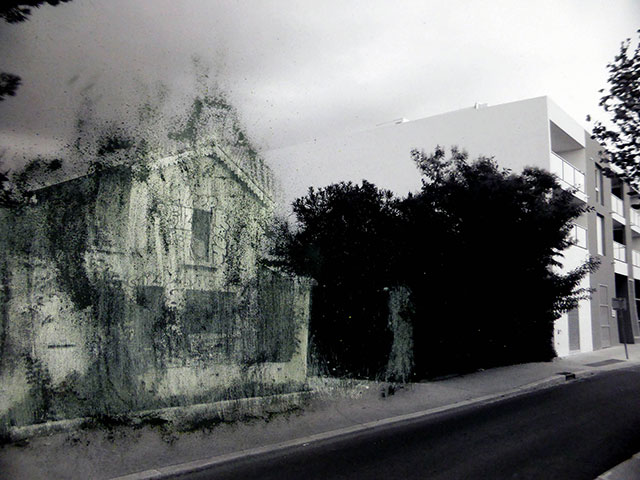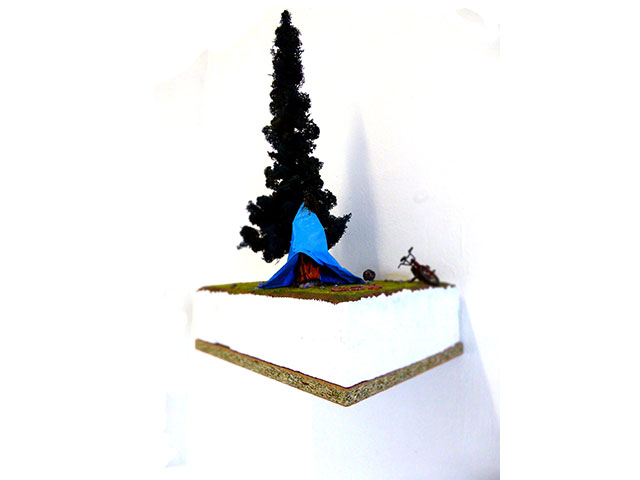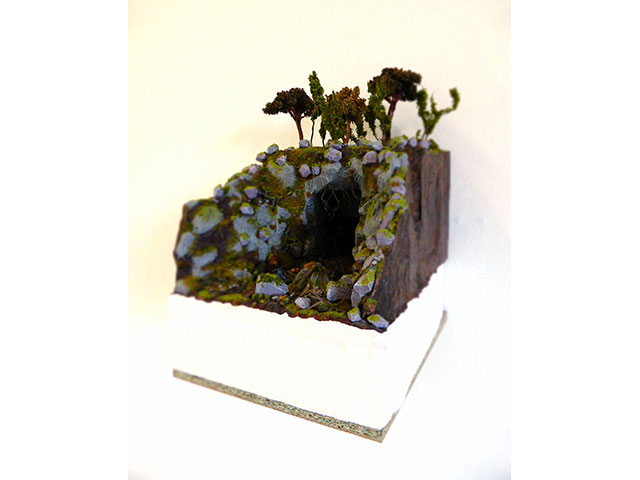My work develops itself around the ruin and how to perceive the ruin through childhood and its materials, its experiences. This process was born in known places and through personal experiences, my playground were mostly placed in the Aisne department (north of France) next to the Ladies’ way or on the Opal coast on which we can find lots of bunkers’ ruins from the Atlantic Wall. Nowadays, this work consists in a tension between construction and destruction, between discovery and recovery, and as a consequence, between game and ruin.
I am interested in the motivations of the vain action, pointless gesture, which appears from the childhood and without half-measure, hidden but omnipresent in the adulthood, as an inevitable rite. So the enactment, the shams are also present in my work and are plastically translated by comings and goings and a complementarity between the practices of the model making and the drawing. The game is a regulated space given to random, to sabotage, it is an inevitable waste of time, always repeated. I try to capture the moment when the space of this game disappears and when the dices are still in the air. When we can make a move aside and admit the fact that we could have wish to lose, when we stop the events before their fall, let make and contemplate our own imbalance, the varnish ready to crack, stuck between a victorious vulnerability and a fun resignation. This is about digging or burying, playing with an infinity of combinations in a finish universe. As a consequence, the artworks or the process of creation can be read as an articulation like kind of role playing games, or like the exploration conducted in the books in which you are the hero (Game- books) with unlimited possibilities of scenarios, or as a video game quest.
This balance is created between artworks which can play one by one or at the same time, different roles, with the idea of trying to perceive the possibilities of places taking different identities, with the wish of pointing individual history in a bigger and collective history, with the wish of revealing the changes of a landscape through souvenirs, and to consider landscapes or places as « used landscapes », and finally the attempt of considering the rebirth of ruins and to define them as a real way of construction, with its own mechanisms.
Finally, my ideas are coming from places, landscapes but also from RPGs, build and smash games and even more from 19th century literature.
Marie Havel is represented by H Gallery, Paris.
www.mariehavel.com


